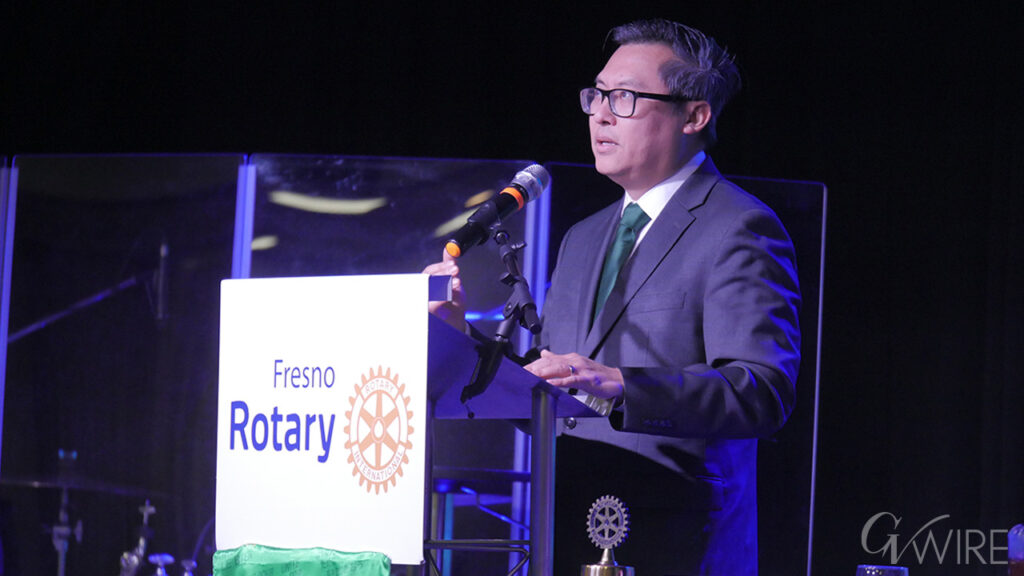Share
Residential growth doesn’t pay for itself, we are told time and again.
Especially in California, the experts say, pointing to a state tax system that limits property taxes courtesy of Proposition 13 and has failed to acknowledge the economy’s shift from retail sales, which are taxed, to services, which aren’t subject to the taxman’s bite.
Grow too fast, we are told, and city officials find themselves scrambling to pay for public safety and to build and maintain parks. There simply isn’t enough money from taxes in the general fund to keep up.
But Clovis is proving the experts wrong.

Opinion
Bill McEwen
“Our responsibility now is to make sure we don’t mess things up as we continue to grow,” says Clovis Mayor Bob Whalen. “Change is not progress if you lose your core.”
Yes, there have been growing pains, which city officials acknowledge. But a look at key statistics shows why Clovis annually populates those best places to raise a family in California lists.
The city had no homicides in 2017.
It added 7,126 jobs between 2012 and 2016, a growth rate of 26.8%.
Its unemployment rate as of this March was 3.4%. That is below the state and U.S. rates of 4.2% and 4.1% respectively.
And, at $64,640, the city’s median household income is above those of California ($63,783) and the nation ($55,322).
How Does Clovis Do It?
The thing that is most impressive about the city’s leadership is how purposeful it is when making decisions. City Hall has a plan and it sticks to the plan as long as the results bear fruit.
Clovis also has a well-established identity built upon quality schools, keeping families safe and paying homage to its days as a cowboy town.
It encourages volunteerism and citizens respond.
Last year, volunteers contributed the equivalent work of 41 full-time employees. They supported seniors, parks and animal services, as well as the police and fire departments.
These volunteers are essential to a city where the government runs lean without sacrificing efficiency and quality.
Clovis has just 92 sworn police officers and about 60 firefighters, but public safety consumes about 87% of the general fund. The city budget for 2017-18 was $237 million; its general fund just $51 million. And yet Clovis has a rainy day budget reserve of nearly 18%.
Pursuing Jobs To Keep Pace With Growth
Back to the purposeful decision-making.
Coming out of the Great Recession, city leaders focused on job growth. Understand: They don’t want Clovis to be a bedroom community of Fresno. They want it to be a real city. And the job-to-residence ratio was falling out of balance. Thus began an effort to capitalize on the healthcare boom and to enhance tourism opportunities.

And now the city is beginning to cash in.
Clovis Community Medical Center is beginning a four-year, $390 million expansion project. A five-story tower will add 144 private beds, 15,000 square feet of emergency room space, six operating rooms, and expand the hospital’s radiology, pharmacy and lab services.
“We’re seeing a lot of new people coming into this area because of the quality of life here,” Community Medical Centers CEO Tim Joslin said after the project was approved. “We need to significantly expand inpatient capacity in our hospital system, and this Clovis project is the quickest and most cost-effective way to do it.”
 “We want it to be at 1-to-1 — a job for every house in Clovis. We’re getting really close. We may get there by the end of this year.” — Clovis Mayor Bob Whalen
“We want it to be at 1-to-1 — a job for every house in Clovis. We’re getting really close. We may get there by the end of this year.” — Clovis Mayor Bob WhalenAnd just last week, California Health Sciences University broke ground on its new campus on 70 acres near Alluvial and Temperance avenues in the Clovis Research and Technology Park. Construction will begin in June on a 3-story, 90,000 square-foot building.
On the hotel front, Clovis is home to 592 rooms today that generate about $2 million in transit occupancy taxes annually. But it has another 538 rooms under construction or in the pipeline.
“We want it to be at 1-to-1 — a job for every house in Clovis,” says Whalen, a Fresno County deputy district attorney. “We’re getting really close. We may get there by the end of this year.”
How Long Can Clovis Keep It Going?
One of the things Clovis benefits from is that its leaders stay on top of things. The best example might be Old Town, the city’s historic downtown. The city never let it decay to the point that it had to be revitalized. The city council continually made investments there, and the positive results are obvious. The restaurants, shops and special events draw visitors from all over Fresno County — and beyond.
However, the bigger Clovis gets, the more complicated its politics will become. And, at some point, there will be a clamor for council members to represent designated districts in the city, not the city at-large, as they do now. History shows that when district voting begins, the politics become hotter and louder.
“We do anticipate in the early 2020s we will be required to go to districts,” Whalen said. “California requires us to do a lot of things … we’re probably going to have to cross it.”
Meanwhile, expect Clovis to keep on growing at a fast clip by attracting families and retirees with its promise of safety along with its schools, green spaces, trails and good-paying jobs.
In a state that is fast becoming unaffordable except for the wealthy, Clovis remains a 24-square mile patch of paradise in the heart of California.



















